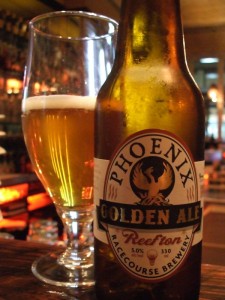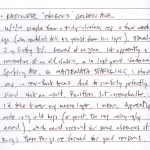
Re-creating old recipes is a neat idea, I think. There are some wickedly wonderful bookish types and homebrewers who archive old brewery notes and get themselves the chance to resurrect and sample long-dead brews. There are also outfits like Dogfish Head who tee up with archeology boffins and go distinctly older-school than that.
Then there are relatively half-assed approaches which are mostly exercises in marketing; in getting your ‘brand story’ off the shelf, as it were. This, sadly, is one of the latter — and I say that even though l liked it.
The rep. said it was made using “wild yeast” collected from behind the original racecourse itself. Scotty was fairly sure — and both of us hoped to hell — that he meant wild hops. But that’s just the thing. They’ve traded brandwank for substance; there is a damn good reason that hops are farmed. They, like all crops, would rather not work so hard. Left to themselves, they don’t crank out the mad levels of flavour or bigness or both that people would like. (The World isn’t here for us, after all.) So when you use wild hops, you don’t get much out of them. And it shows, here; the beer is well-made enough, but it’s very mild. That said, it’s preferable to basically every bog-standard lager-thing out there. It just doesn’t have the fun, lush loveliness that you can get from a nice golden ale.

Verbatim: Racecourse ‘Phoenix’ Golden Ale 16/9/10 Sample from a truly-clueless rep. a few weeks ago (who couldn’t tell his yeast from his hops). 330ml ÷ 2 w/ Scotty 5%. Brewed at Wigram, but apparently a recreation of an old classic, a la last year’s Waitemata Sparkling Ale. Or WAITEMATA SPARKLING, I should say, in new-Book terms. And it’s similarly perfectly bland. Not an insult. Faultless, but unremarkable. I’d take it over any macro lager, I mean. Apparently made using wild hops (or yeast, the rep. worryingly erred), which would account for some absences of zing; these things are farmed for good reasons.
